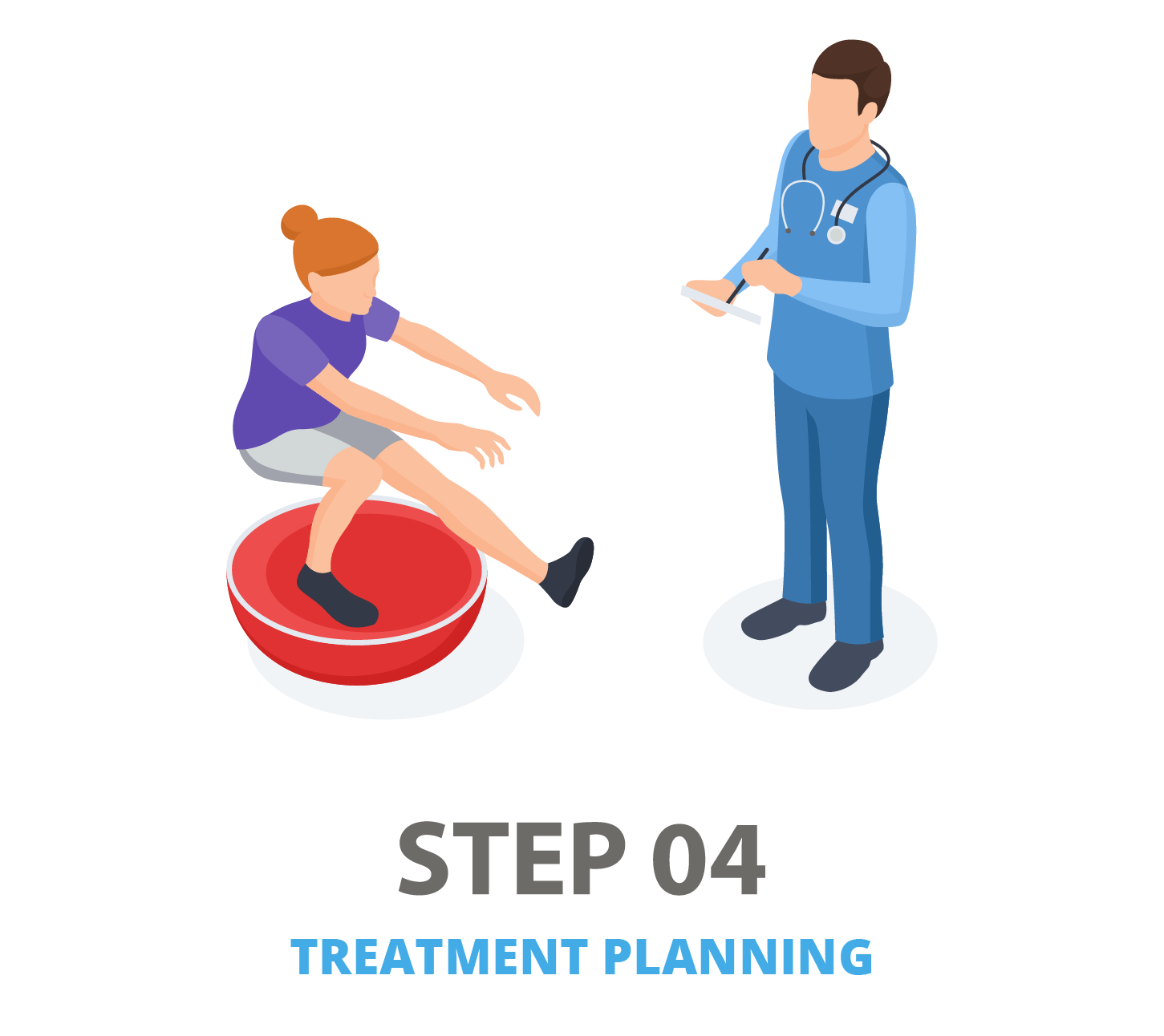cardiac rehabilitation

Keep your blood flowing
cardiac rehabilitation
Tailored Care for Optimal Recovery
Cardiac rehabilitation not only improves overall health and lowers health risks but also helps individuals quickly return to activities they enjoy. By utilizing the expertise of physiotherapists and specialized professionals, it provides a customized treatment plan tailored to meet individual needs.
The 9 step Rehabilitation process

Initially, a comprehensive assessment and evaluation of the patient’s condition are performed. The physical therapist collects detailed information about the patient's medical history, symptoms, and functional challenges. Physical examinations and tests are carried out to pinpoint the underlying problems.

Following the assessment, the physical therapist provides a diagnosis, identifying the primary issues and crafting a treatment plan tailored to the patient’s specific needs.

The physical therapist and patient collaborate to establish SMART (Specific, Measurable, Achievable, Relevant, Time-bound) goals. These objectives might involve enhancing range of motion, alleviating pain, building strength, and improving overall function.ilored to the patient’s specific needs.

A thorough treatment plan is created by the physical therapist, based on the assessment findings and established goals. This plan may encompass various approaches, including therapeutic exercises, manual therapy, modalities (such as heat or ice), and patient education

The treatment plan is actively implemented in this phase. Patients engage in exercises and activities designed to boost strength, flexibility, balance, and functional capabilities. Manual therapy techniques may also be utilized to address specific concerns.

The therapist consistently monitors the patient’s progress throughout the therapy. Adjustments to the treatment plan are made as needed, depending on the patient’s response and any changes in their condition.

Education plays a vital role in physical therapy. Patients are informed about their condition, body mechanics, and techniques for preventing future injuries. They may also receive instructions on home exercises.

A home exercise program is often provided to support the progress made during therapy sessions. Adhering to this program is crucial for achieving the best results.

As the patient advances, the focus may shift to functional training. This involves activities that simulate daily tasks, helping the individual regain the ability to perform everyday activities with greater ease.

1 - Assessment and Evaluation
Initially, a comprehensive assessment and evaluation of the patient’s condition are performed. The physical therapist collects detailed information about the patient's medical history, symptoms, and functional challenges. Physical examinations and tests are carried out to pinpoint the underlying problems.
2 - Diagnosis
Following the assessment, the physical therapist provides a diagnosis, identifying the primary issues and crafting a treatment plan tailored to the patient’s specific needs.
3 - Goal Setting
The physical therapist and patient collaborate to establish SMART (Specific, Measurable, Achievable, Relevant, Time-bound) goals. These objectives might involve enhancing range of motion, alleviating pain, building strength, and improving overall function.ilored to the patient’s specific needs.
4 - Treatment Planning
A thorough treatment plan is created by the physical therapist, based on the assessment findings and established goals. This plan may encompass various approaches, including therapeutic exercises, manual therapy, modalities (such as heat or ice), and patient education
5 - Therapeutic Interventions
The treatment plan is actively implemented in this phase. Patients engage in exercises and activities designed to boost strength, flexibility, balance, and functional capabilities. Manual therapy techniques may also be utilized to address specific concerns.
6 - Monitoring and Adjustments
The therapist consistently monitors the patient’s progress throughout the therapy. Adjustments to the treatment plan are made as needed, depending on the patient’s response and any changes in their condition.
7 - Patient Education
Education plays a vital role in physical therapy. Patients are informed about their condition, body mechanics, and techniques for preventing future injuries. They may also receive instructions on home exercises.
8 - Home Exercise Program
A home exercise program is often provided to support the progress made during therapy sessions. Adhering to this program is crucial for achieving the best results.
9 - Functional Training
As the patient advances, the focus may shift to functional training. This involves activities that simulate daily tasks, helping the individual regain the ability to perform everyday activities with greater ease.
Take your heart seriously
This rehabilitation is beneficial for individuals recuperating from:
- Heart attack
- Angina
- Heart failure
- Heart valve repair/replacement
- Coronary artery bypass surgery
- Heart transplant
- Angioplasty (stent)
- Cardiomyopathy
- Peripheral vascular disease
- Non-debilitating stroke
- Renovascular disease
- Arrhythmias
Even for those without a history of heart problems but possessing multiple risk factors, cardiac rehab serves as a preventive measure. Risk factors may include:
- High blood pressure
- High cholesterol
- Diabetes
- Smoking
- Sedentary lifestyle
- Obesity
- Benefits of Cardiac Rehab
The advantages of cardiac rehabilitation are extensive:
- Accelerates recovery
- Enhances body strength
- Reduces health risks
- Promotes a healthier and longer life
- Facilitates safe exercise
- Supports weight loss
- Restores engagement in former activities
Our specialists carefully evaluate the appropriate and safe exercise levels for each individual, creating a rehabilitation plan that includes aerobic exercises for heart health, dietary guidance, stress management techniques, support for smoking cessation, education on heart health, and assistance with managing heart medications.
Although the time it takes to see results may vary, positive changes—such as relief from chest pain, weight loss, reduced stress, and improved mood—usually become noticeable shortly after starting the rehabilitation program.

We direct Bill to your insurance
Cost & coverage
Like many of our services, our treatment programs are often covered through employer, auto, or disability insurance. So treatments can be available at little or no cost to you. Get in touch or schedule a consultation to learn more.
Are you ready to start your healing Journey?
Book an Appointment
Our team of experts will accurately diagnosed and determine the most efficient healing Journey for your specific ailments. So what are you waiting for? Take the first step towards a pain-free and healthy life today!
